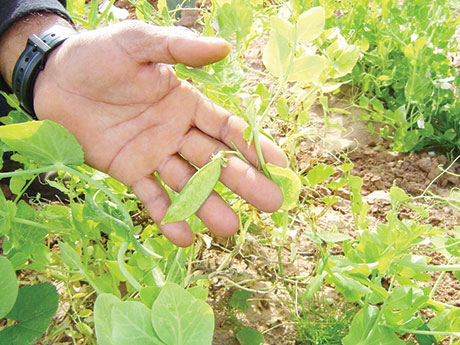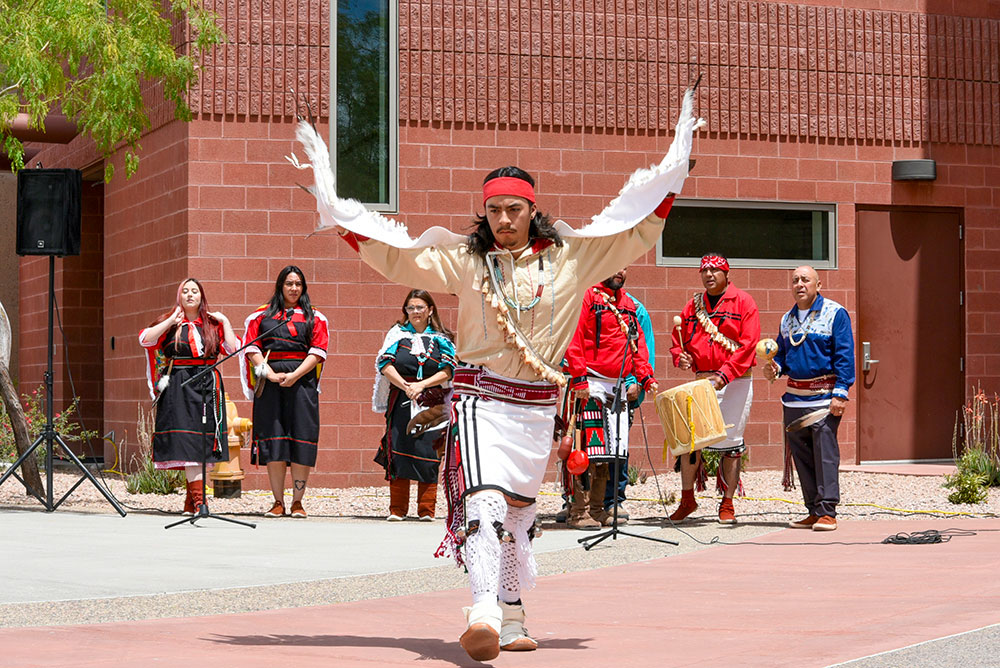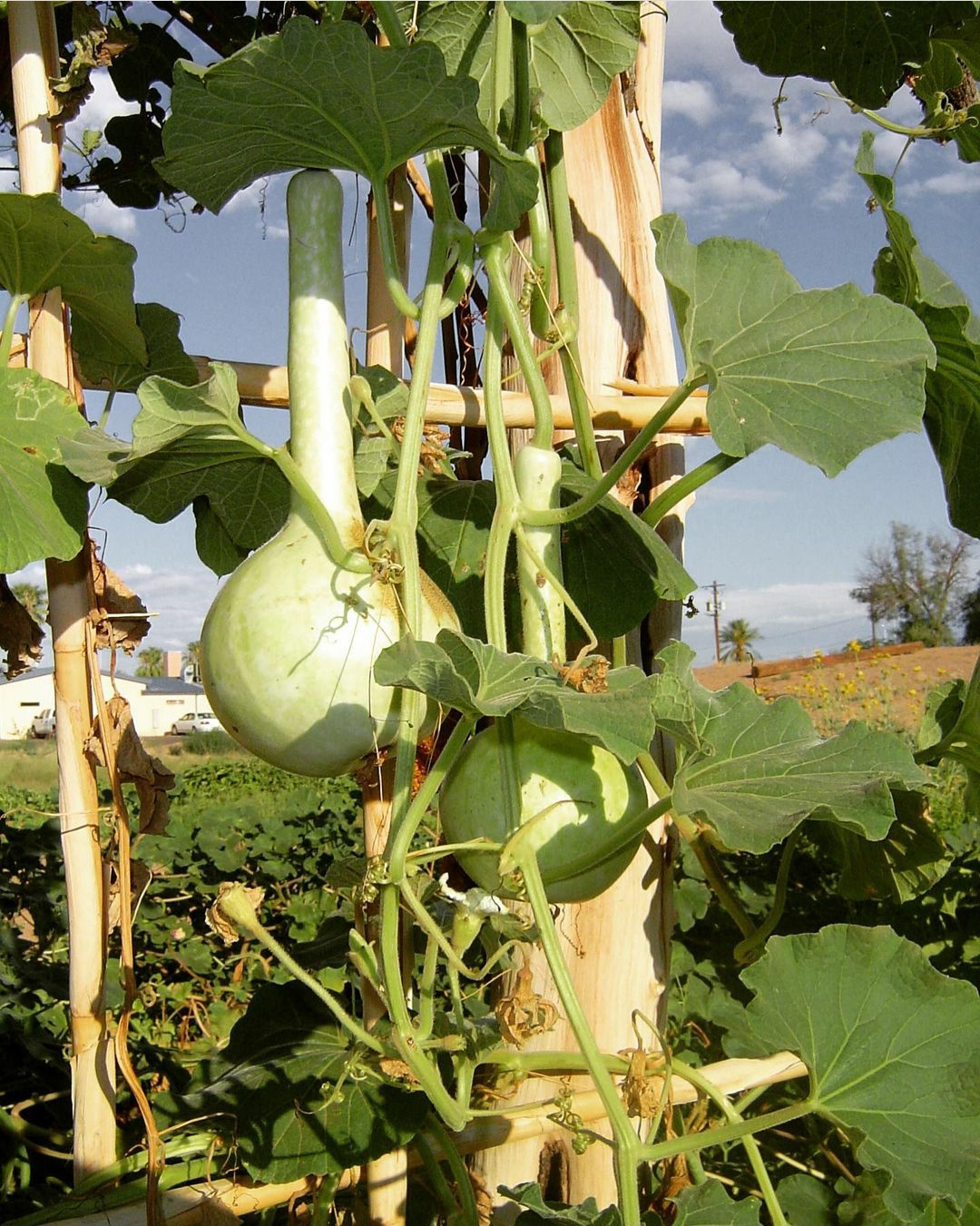VIEWS: 3908
September 16, 2021The History of the Salt River Pima Pea
The Salt River Pima pea is a tan pea that came to the Salt River Pima-Maricopa Indian Community via the Spanish a few centuries ago. The journey of this pea comes with many stories; some are lost in time, and other stories can be traced back through oral tradition and the documentation from Community members and visitors over the years.
One story that we can tell for sure involves Butler’s experiences in tracking down this pea.
Butler was about 18 years old when he became interested in growing crops traditionally planted by the O’odham. He had just become a father and was trying to look for a different activity to occupy his time.
“Other than what my father had shared with me, I didn’t know too much about our traditional practices when I was a teenager, aside from what we learned in recreation education,” said Butler. “When I started to become an adult, I was a father already and I wanted to know more about who we were as O’odham people and what our cultural values were. I learned that we were farmers and river people, and I started to go to the river and learned more about these seeds that I ended up sourcing. I went to people who I knew gardened and talked to and learned from them.”
At this time, around 1998, there weren’t a lot of traditional seeds that were saved from the Community. People knew about the white and brown tepary beans and some corn, melon and squash varieties, such as the O’odham Ha:l squash.
“The seed bank that we have today was very much in its infancy; it started in my house,” said Butler. When he took the position as Community Garden coordinator, he brought all of those seeds with him, and that’s what started the seed collection for Community members interested in growing traditional food crops.
People like Ed Mendoza, Butler’s uncle, farmed these foods and started Butler off on this seed-collecting journey.
Butler came across the Native Seeds/SEARCH seedlisting at that time while he was looking for something to grow in the winter.
Anything that flowers and produces a fruit, the O’odham would eat. Historically, the O’odham had only two growing seasons, with a short season around September to be able to have a harvest before the crops freeze. For the O’odham, the winter was more of a time for family coming together after a long harvest, preparing those foods for long storage and passing down traditional knowledge through storytelling.
In the seedlisting, Butler saw a pea attributed to Salt River. “I think it said ‘Salt River tan pea’ or something like that,” he said. So Butler acquired the pea’s seeds from Native Seeds/SEARCH.
Talking to some Community members over the years, Butler and others discovered that the gentleman who most likely sourced the seeds to Native Seeds/SEARCH was Jasper Baptisto, one of the last growers of traditional O’odham foods in the Community.
“He grew those tan peas,” said Butler. “That was awesome to me, because I knew him and grew up around him, and I went to the same church as him. It was exciting to see the seeds that once grew here, and it was exciting to see the name ‘Salt River’ attributed to the peas. It really meant a lot for me to bring them home and grow them. I felt like I was bringing something home that should have always been here.”
The simple fact that it was collected from the SRPMIC makes it a Salt River Pima pea. Is this pea any different from ones that were collected in the Gila River Indian Community? Probably not. “But there may be some slight differences if you study the pea and find microscopic differences, but that hasn’t been done yet,” said Butler. “The genetic makeup might be slightly different from other tan peas among the O’odham, but when you are collecting seeds for ethnobotanical studies, what makes them different is very little.”
According to Butler, these seeds undoubtedly came from the Akimel O’odham from the Gila River Indian Community, originating from the Spanish. The Tohono O’odham Nation also could have come across these peas by trading with the Akimel O’odham. “The people living in Salt River today all came here when the water started to dry up at the Gila River and they weren’t able to farm. So, when [the O’odham] moved this way, we moved with the seeds that we needed to farm,” said Butler.
Along with the peas, the Spanish brought onions and wheat, which overtook corn as the primary staple crop of the O’odham people. The tan peas existed with the people long enough to develop their own unique traits and became their own specific varieties based on the place and climate where they were grown. Although they have been reintroduced into the Community, the tan peas are very much connected to and unique to the SRPMIC.
Butler has a book containing a census report that lists many of the seeds found at the SRPMIC in the 1930s. One of the varieties listed is a tan pea. “We lost probably 80% to 90% of the seed diversity that we had when someone first came out and documented those crops,” said Butler. “Tepary beans, for example, had 13 different types listed, and at the time the Community Garden started, the Community only knew of two.”
What makes it extra special to Butler is that someone came out to the Community and gathered the peas from here. “The peas had a role here and existed before me, so to bring them back is really special. It was a part of our diet that was introduced and accepted and then lost,” said Butler. SRPMIC members can obtain the unique Salt River Pima peas through the Community Garden program or through the Native Seeds/SEARCH Native American Seed Request program at www.nativeseeds.org.







